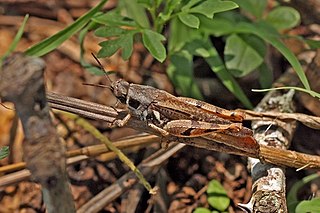
The subfamily Catantopinae is a group of insects classified under family Acrididae. Genera such as Macrotona may sometimes called "spur-throated grasshoppers", but that name is also used for grasshoppers from other subfamilies, including the genus Melanoplus from the Melanoplinae.

Bandwings, or band-winged grasshoppers, are the subfamily Oedipodinae of grasshoppers classified under the family Acrididae. They have a worldwide distribution and were originally elevated to full family status as the Oedipodidae. Many species primarily inhabit xeric weedy fields, and some are considered to be important locusts:

The Calliptaminae are a subfamily of grasshoppers containing species found in Africa, Europe and Asia; some are economically important. It was originally erected as a tribe by G.G. Jacobson in 1905 as the "Calliptamini", later uprated by Dirsh in 1956.

Chorthippus is a large genus of acridid grasshoppers with around 230 described species. The genus may be subdivided into subgenera including: Altichorthippus, Chorthippus and Glyptobothrus, with other species not placed.
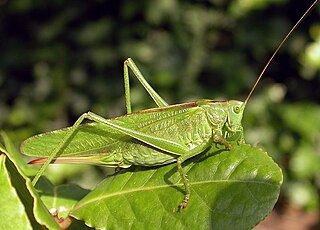
The Tettigoniinae are a subfamily of bush crickets or katydids, which contains hundreds of species in about twelve tribes.
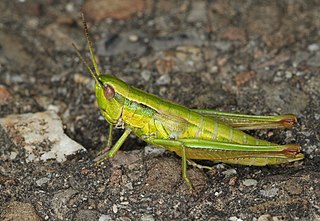
Gomphocerinae, sometimes called "slant-faced grasshoppers", are a subfamily of grasshoppers found on every continent but Antarctica and Australia.

Calliptamus italicus, the Italian locust, is a species of 'short-horned grasshopper' belonging to the family Acrididae, subfamily Calliptaminae.

Tettigonia is the type genus of bush crickets belonging to the subfamily Tettigoniinae. The scientific name Tettigonia is onomatopoeic and derives from the Greek τεττιξ, meaning cicada.

Euchorthippus is a genus of short-horned grasshoppers belonging to the family Acrididae and the subfamily Gomphocerinae. Species are recorded from Europe and temperate Asia.

Valanga is a genus of "bird grasshoppers" in the subfamily Cyrtacanthacridinae. Species are found from the Indian subcontinent through southeast Asia and the Korean peninsula to Australia and the Pacific islands.

Dociostaurus is a genus of grasshoppers in the family Acrididae, subfamily Gomphocerinae and typical of the tribe Dociostaurini. Species are found in Africa, southern Europe and Asia, and includes the economically important Moroccan locust.

Eyprepocnemis is a genus of grasshoppers in the subfamily Eyprepocnemidinae with species found in Africa, Southern Europe through to tropical Asia.
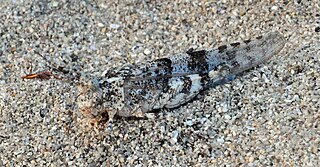
Sphingonotus is a genus of grasshoppers in the family Acrididae, subfamily Oedipodinae, found in Europe Africa, Asia and Australia.

Kraussaria is a genus of grasshoppers in the subfamily Cyrtacanthacridinae with species found in Africa.

Acorypha is a genus of grasshoppers belonging to the family Acrididae.

Heteracris is a genus of short-horned grasshoppers in the family Acrididae. There are more than 60 described species in Heteracris, found in Africa, southern Europe, and manland Asia through to India.
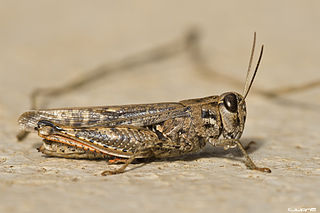
Calliptamus plebeius is a species of short-horned grasshopper in the family Acrididae. It is found in southern Europe and northern Africa.
Asiotmethis is a genus of European and Western Asian grasshoppers belonging to the family Pamphagidae, erected by Boris Uvarov in 1943. Belonging to the tribe Thrinchini, the species can be found in Greece through to Iran and central Asia.
Eremippus is a genus of Palaearctic grasshoppers in the tribe Dociostaurini, erected by Boris Uvarov in 1926. Species are recorded from eastern Europe and central Asia through to eastern China.


















